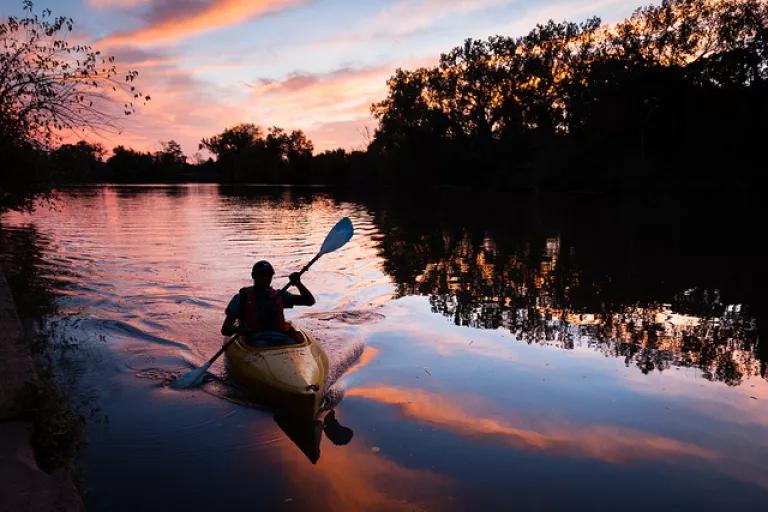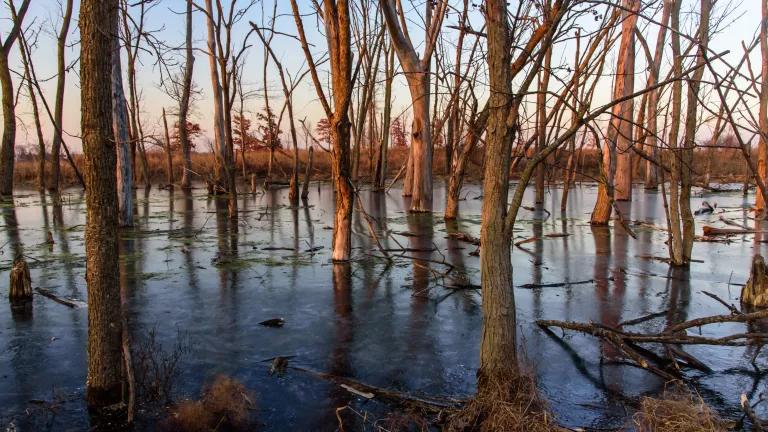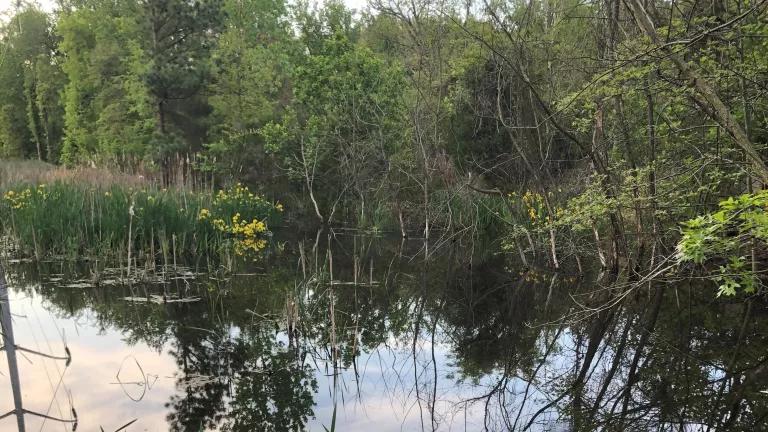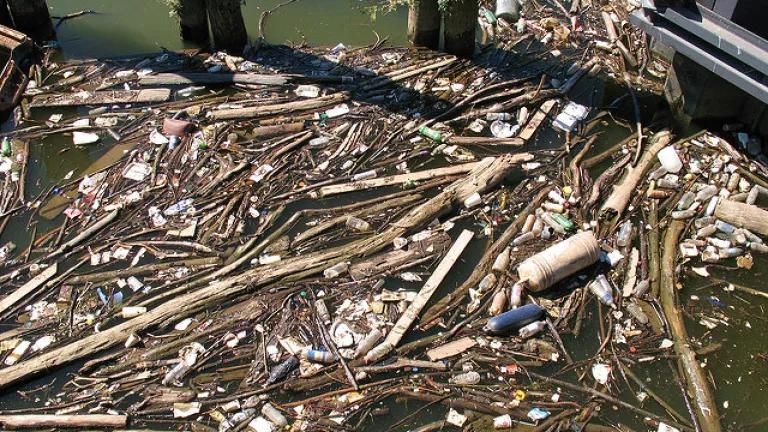
Today NRDC sued the Environmental Protection Agency (EPA) for approving a flawed clean-up plan for trash in the Anacostia River.
The Anacostia—which flows from Maryland, through the District of Columbia, and eventually into the Potomac—is one of the few waterways in the country that’s legally designated as “impaired” by trash. The river is choked with plastic bags, food wrappers, plastic bottles, Styrofoam, and other rubbish that’s washed into its waters by stormwater pipes or dumped directly on its banks.
All this litter makes the Anacostia unsafe and unpleasant for people to use. It harms wildlife. In short, it prevents the river from living up to its potential as a beautiful natural resource for the residents of the national capital region. The people who live in neighborhoods along the river, many of whom are people of color, deserve better. So do the visitors from other areas who want to row, boat, or fish on the river, or walk or bike along its banks.
Maryland and the District of Columbia took the first step toward addressing the problem in 2010, when they developed a plan known as a “total maximum daily load” or TMDL. According to the Clean Water Act, governments are required to develop one of these plans whenever a water body isn’t meeting water quality standards.
We were glad to see these jurisdictions taking action to clean up the Anacostia. We weren’t as excited about the plan they actually put forward. Maryland and D.C. didn’t step up to the task and do what the law requires: establish a “maximum load,” or cap, on the amount of trash that can enter the river. Faced with the prospect of complying with a true limit on trash discharges, they adopted a plan that didn’t establish one.
Instead, the plan calls for a certain amount of trash to be removed from the river, or prevented from entering it in the first place, each year. This “removal” obligation was calculated from a “baseline” amount of trash (an estimate of how much trash was being dumped into the river at the time the plan was adopted).
In theory, “removing” the baseline amount of trash discharged annually—1.2 million pounds, or about 600 tons—could lead to a trash-free river. EPA signed off on this approach and approved the plan. Now, the three jurisdictions in the watershed (the District of Columbia and Montgomery and Prince George’s Counties in Maryland) are required to “remove” their share of the baseline trash load as conditions of their stormwater permits.

But the studies that were used to estimate the baseline were very limited. They covered only a tiny fraction of the watershed—less than 1 percent. And studies done in different areas reached very different conclusions about how much trash was actually entering the Anacostia. As a result, there’s good reason to believe the plan’s calculated baseline was never accurate. If that’s true, our local governments could “remove” the specified amounts of trash from their discharges but still end up dumping garbage into the river.
Even if the baseline were a good approximation of average annual trash discharges, there are big fluctuations in trash levels from year to year. In a year with above-average trash, removing the baseline amount of trash wouldn’t leave the river trash-free. Plus, tens of thousands of people have moved into the area over the last several years, and this population growth will only continue over time. More people create more trash, but the plan doesn’t account for that.
Aside from the inaccuracy of the baseline, the “removal”-based approach creates other practical problems that reduce confidence in the plan’s ultimate success.
It’s extremely difficult, if not impossible, to accurately calculate how much trash certain “removal” practices are actually “removing.” In some parts of the watershed, like the river’s mainstem in the District of Columbia, trash can be physically removed from the water and measured. In upstream areas, however, local governments rely on other methods to keep trash out of the river, such as educating residents about recycling or charging fees for plastic bags.
None of the jurisdictions implementing the plan have come up with a good way to estimate how much “reduction” those activities achieve. In fact, there is no scientifically established method for doing so. The jurisdictions ended up adopting formulas based on one or two studies at best, or wholly unfounded assumptions at worst.
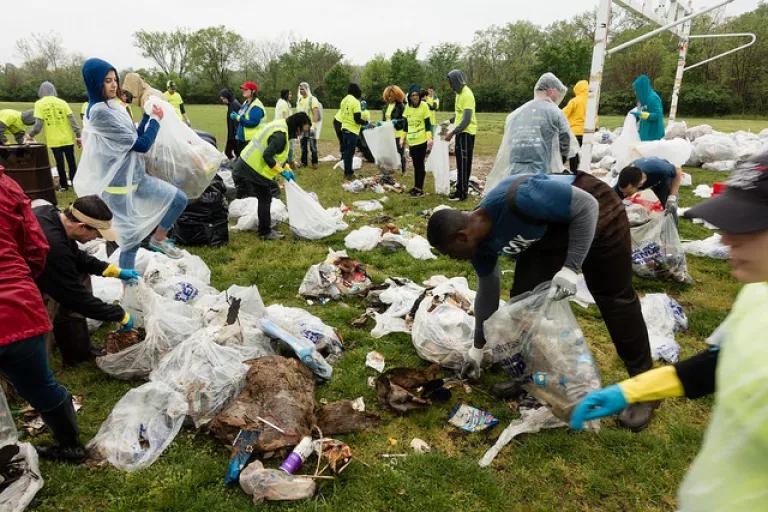
Without a reliable way to calculate “reductions,” neither regulators nor citizens can determine whether local governments are meeting their obligations. The entire approach eliminates accountability for eradicating trash from the Anacostia. That would always be the case with a “removal”-based plan, even if it were revised to include a more accurate baseline.
That’s why we’re taking action today, represented by the Georgetown Institute for Public Representation. We’re not going to solve our trash problem with a plan that requires abstract math formulas to measure intangible “reductions” against an imprecise baseline, telling us nothing about actual trash levels. We need a hard-and-fast limit on trash in the river, one that can be verified through real-world monitoring.
We objected to the “removal”-based approach when it was first proposed, and we tried again to fix it last year by submitting a petition to Maryland and D.C. They shot us down, leaving us no option but to ask a court to enforce the requirements of the Clean Water Act.
In the meantime, Maryland is copying the same approach in other places. It adopted a similar “removal”-based plan in Baltimore in 2014. EPA cannot continue approving plans that are inherently unable to guarantee that they’ll lead to clean waterways. It’s time to do what the law requires and establish a maximum limit on trash in the Anacostia.
